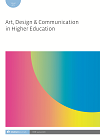
Full text loading...

Paper-based sketches used in the first stage of architectural design have started to be replaced by digital sketches. Since many universities have switched to online education during the pandemic period, digital sketches have come to the fore in this period. It is seen that the architectural forms in the digital sketches are shaped according to the computer programme used, especially in undergraduate architecture education. This situation was identified as a problem in this study. As a solution to this, it is aimed to develop a method in order to develop the form-oriented creativity of the students in the computer environment. After the experimental case study, a questionnaire was conducted with the students to evaluate this method. It has been concluded that the exercise method proposed in this study can enable students to make digital sketches more easily.

Article metrics loading...

Full text loading...
References


Data & Media loading...

Publication Date:
https://doi.org/10.1386/adch_00073_1 Published content will be available immediately after check-out or when it is released in case of a pre-order. Please make sure to be logged in to see all available purchase options.